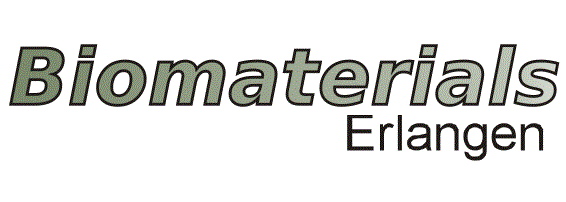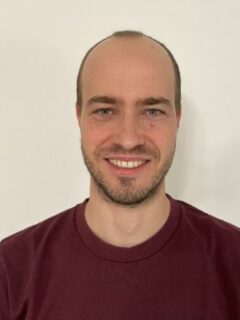Sebastian Brucker
Sebastian Brucker
Masterstudent
Optimization of OHA-based hydrogels in terms of their mechanical properties to mimic neuronal ECM properties
Betreuer: Markus Lorke, Prof. Aldo R. Boccaccini
Hyaluronic acid (HA) is a component of the human extra cellular matrix and is therefore used as a biomaterial for soft tissue engineering. It is biocompatible and promotes cell growth and differentiation. Oxidation of HA improves crosslinkability with polymers containing amino groups to improve mechanical properties [1]. Hydrogels based on oxidized hyaluronic acid (OHA) are therefore promising candidates for neural tissue engineering because of their brain mimicking behavior. The mechanical properties of the hydrogels can be tailored by chancing the polymer composition, their composition and the crosslinking technique to resemble the desired tissue [2]. The aim of this Master thesis is to determine the mechanical properties considering stiffness, degradation, crosslinking and pore size of different compositions of OHA-based hydrogels crosslinked with an enzymatic agent for their suitability to mimic neuronal ECM properties.
[1] A. H. Pandit, N. Mazumdar, and S. Ahmad, “Periodate oxidized hyaluronic acid-based hydrogel scaffolds for tissue engineering applications,” International Journal of Biological Macromolecules, vol. 137, pp. 853–869, 201
[2] Kuth, Sonja; Karakaya, Emine; Reiter, Nina; Schmidt, Laura; Paulsen, Friedrich; Teßmar, Jörg et al. (2022): Oxidized Hyaluronic Acid-Gelatin-Based Hydrogels for Tissue Engineering and Soft Tissue Mimicking. In: Tissue engineering. Part C, Methods 28 (7), S. 301–313. DOI: 10.1089/ten.TEC.2022.0004

